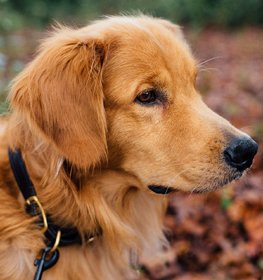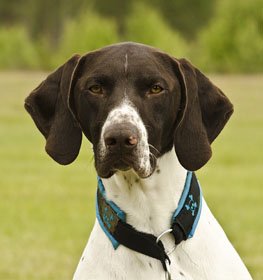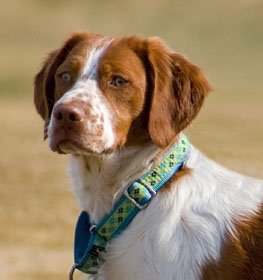Sussex Spaniel Information & Dog Breed Facts
Collection of all the general dog breed info about Sussex Spaniel so you can get to know the breed more.
| Group | Gun Dog |
|---|---|
| Popularity Rank | 161 |
| Reviews | 2 |
| User Ratings | |
|
Compare the Sussex Spaniel With Other Dogs
Select at least one dog breed to make the comparsion. | |
 | |
| Origin | |
|
Common Names & Aliases
What other names is a Sussex Spaniel known by? Discover all traditional, regional and informal names used for this breed. | Sussex |
|---|---|
|
Breed Classification
What type of dog breed is a Sussex Spaniel? Learn about its genetic classification and breeding category. | Purebred |
|
Size Classification
What size category is a Sussex Spaniel? Learn how big the Sussex Spaniel breed typically grows. | Medium |
|---|---|
|
Weight Statistics
How much does a Sussex Spaniel weigh? Discover typical weight ranges for adult males and females of the Sussex Spaniel breed. | Male: 40-44 pounds (18–20 kg), Female: 35-44 pounds (16–18 kg) |
|
Average Weight
What is the average weight of a Sussex Spaniel? | Male: 42 pounds (18–20 kg), Female: 39.5 pounds (16–18 kg) |
|
Height
How tall is the Sussex Spaniel? Sussex Spaniel height: | 15-16 inches (38-40 cm) |
|
Average Height
What is the average height of a Sussex Spaniel? | 15.5 inches (39 cm) |
|
Price Range
How much does a Sussex Spaniel puppy cost? Find current market prices and factors affecting Sussex Spaniel costs. | $2400-$2600 If you choose to purchase the Sussex Spaniel, you should know that the mentioned amount of money is an average of the collected data from breeders’ sites and puppy finder places. If you have a Sussex Spaniel for sale, please advertise it on a reliable website to make sure the Sussex Spaniel gets to a happy place. |
|---|---|
|
Availability
How easy is it to get a Sussex Spaniel? How many Sussex Spaniel are there in the world? | Frequent: The Sussex Spaniel is easier than average to get. Maybe there is some risk of overbreeding, as it is a popular breed. Due to its popularity, inbreeding may occur. A new study shows that inbreeding contributes to the incidence of disease and health problems. So be careful and seek the help of an experienced person or a professional, in making your decision. |
|
Intelligence Rating
How intelligent is a Sussex Spaniel? Discover the Sussex Spaniel's intelligence ranking and learning capabilities. | Low to average: This canine intelligence is not the brightest one. Keep in mind that if you want to teach them any tricks, they understand and memorize new commands in 40-80 repetitions. Sussex Spaniel obey the first command 30% of the time or better. So if you want to have a smart dog, you might have to reconsider your choice with this breed.
The Sussex Spaniel ranks below average in the intelligence ranking of dogs. |
|---|---|
|
Training Difficulty
How easy is it to train a Sussex Spaniel? Learn about the Sussex Spaniel's trainability and response to training methods. | Sussex Spaniel dogs are quite easy to train. Sometimes they can be challenging, but if you're consistent in teaching new commands they will obey for sure. |
|
Watchdog Rating
How good is a Sussex Spaniel as a watchdog? Learn about the Sussex Spaniel's alertness and guarding instincts. | Sussex Spaniel dogs are average watchdogs. If they sense something different, they will alert you, but observation isn't considered their main job.
|
|
Territorial Protection
Is a Sussex Spaniel protective of its territory? Learn about the Sussex Spaniel's guarding instincts and behavior. | Sussex Spaniel dogs are average defenders. Some dogs are very protective of their territory, while others easily let a stranger to trespass. This breed is not sure to defend its territory in every situation. |
|
Personality Traits
What personality does a Sussex Spaniel have? Learn about characteristic Sussex Spaniel temperament and behavior traits. | FriendlyDevotedSociableCompanionableCheerfulCalm |
|---|---|
|
Sensitivity Level
How sensitive are they? Sussex Spaniel sensitivity: | Sensitive: Sussex Spaniel dogs don't like an irregular daily routine, noisy household, and frequent guest visits.
This breed's emotional level reflects their owner's feelings and they don't handle punishments well. |
|
Affection Level
How affectionate are they? Is a Sussex Spaniel a good family dog? | High: Sussex Spaniel dogs are genuinely loyal, soft and gentle, loving, and affectionate dogs toward their handlers. They enjoy quality time with their owners despite the activity and are considered great therapy dogs for those in need. This breed responds strongly to their handler's emotions because they bond closely. Their happiness is your happiness. |
|
Social Needs
How much social interaction does the Sussex need? Sussex Spaniel social needs: | Sussex Spaniel dogs need for social interaction is average. This breed likes being around people or other animals, but they don't mind being left alone for a few hours either. |
|
Impulse to Wander or Roam
How likely is the Sussex Spaniel to run away? Does this breed explore or wander a lot? Does Sussex Spaniel roam? | Sussex Spaniel dogs are not the biggest explorers. They have low wanderlust potential. Low chance of escaping from home with this breed. |
|
Prey Drive
Do this canine have a strong prey drive? Does Sussex Spaniel have high prey drive? | Their prey drive is low. Sussex Spaniel dogs don't have an impulse to catch or chase small animals. |
|
Barking Frequency
Does a Sussex Spaniel bark a lot? Learn about typical Sussex Spaniel vocalization patterns and triggers. | A lot: Sussex Spaniel is a particularly loud breed. They often enjoy barking and howling loudly. If you want a quiet dog, not the best choice.
The main triggers for barking are fear, attention, alarm, boredom, greeting, separation anxiety, compulsive barking, and defense. |
|---|---|
|
Playful Nature
How playful is a Sussex Spaniel? Understand the typical play drive and energy level of the Sussex Spaniel breed. | Average: Sussex Spaniels, like any other dog breed, like playing. Sometimes they bark in excitement for playing, but they are not the most playful dog breed. |
|
Apartment Adaptability
Can a Sussex Spaniel live in an apartment? Learn about the Sussex Spaniel's suitability for apartment living. | It is not the best choice if you want to keep them indoors, however, with careful exercise and several walks a day, they will tolerate the indoor environment, so it is possible to keep Sussex Spaniel indoors. |
|
Lifestyle Adaptability
How adaptable is a Sussex Spaniel to lifestyle changes? Learn about the Sussex Spaniel's flexibility to new situations. | Sussex Spaniel dogs adapt very well to lifestyle changes and basically all living environments. They don't mind moving from one place to another with their owner. |
|---|---|
|
Alone Time Tolerance
Can a Sussex Spaniel be left alone? Learn about the Sussex Spaniel's tolerance to solitude. | Just like every puppy, they are prone to panic, cry, bark, whine when they left alone by their owner. With proper socialization and quality time with the dog can solve this problem. |
|
Bite Risk Assessment
What is a Sussex Spaniel biting potential? Learn about the Sussex Spaniel's bite risk factors. | Low 🔽 The Sussex Spaniel has a low chance of biting somebody. Top reasons for dog bite: protection, pain, excitement, herding instinct, being provoked. (Data based on the available online bite statistics.) |
|---|---|
|
Mouthing Tendency
Is a Sussex Spaniel mouthy? Learn about the Sussex Spaniel's tendency to use mouth during play. | Sussex Spaniel dogs have a lower than average tendency to nip, chew, playbite, or herd people. It's a common habit during puppyhood, not aggressive behavior. These "bites" don't hurt, but Sussex Spaniel dogs need to be taught a good attitude. |
|
Bite Strength Rating
How strong is a Sussex Spaniel bite? Learn about the Sussex Spaniel's bite force measured in PSI. | Between 200 and 400 PSI ⏺ Sussex Spaniel bite force: Ordinary. Bite force Sussex Spaniel measurements typically fall within the range of 200 to 400 PSI. The bite force of a Sussex Spaniel is considered ordinary when compared to other dog breeds, but it is still quite powerful. This Sussex Spaniel bite force PSI can cause bite wounds. Sussex Spaniel bite PSI is not something that should be feared if the dog is well-trained and managed. To avoid any issues, it's essential to learn how to train a Sussex Spaniel puppy not to bite from an early age.
The Sussex Spaniel, and many others, have a fearsome presence because they have significant jaw strength, so it is important not to anger the dog and have it around strangers until it is fully trained. However, they are usually quite calm and good companions, they work well in families and are easy to care for. In conclusion, while the Sussex Spaniel bite force is certainly an interesting aspect of the breed, it is important not to let it overshadow the many other reasons why these dogs are so loved and respected. With proper training and socialization, a Sussex Spaniel can be a loyal and protective companion for your family. |
|
Average Lifespan
How long does a Sussex Spaniel live? Learn about the typical lifespan of the Sussex Spaniel breed. | 11-15 years The average lifespan of Sussex Spaniel: 13 years |
|---|---|
|
Climate Tolerance
How well does a Sussex Spaniel handle different weather? Learn about the Sussex Spaniel's climate adaptability. | Prefers cold weather The Sussex Spaniel can adapt well to harsh weather conditions, and also can be a good mountain dog. Dogs can suffer from frostbite and hypothermia in extremely cold weather, so it is important to take precautions to keep your dog safe and comfortable during the winter months. |
|
Health Concerns
What health issues are common in a Sussex Spaniel? Discover typical conditions affecting the Sussex Spaniel breed. | The Sussex Spaniel is a healthy breed, but there are certain health issues that you should check with your vet regularly. |
|
Vet Care Frequency
How often does a Sussex Spaniel need vet visits? Learn about the Sussex Spaniel's veterinary care requirements. | Average The Sussex Spaniel should have a complete physical check-up at least once per year. If your dog shows any symptoms, call your veterinarian. |
|
Energy Rating
How energetic is a Sussex Spaniel? Understand daily activity needs of the Sussex Spaniel breed. | Sussex Spaniel dogs have a lower energy level than other dogs. If you live a chilled life, this breed can be a good choice for you. |
|---|---|
|
Activity Requirement / Exercise Need
How much exercise does a Sussex Spaniel need? How much exercise do Sussex Spaniel dogs require per day?
Do Sussex Spaniel dogs need a lot of exercises? | Sussex Spaniel dogs need quite a lot of exercise. Daily walks should be on schedule. If you live an active life, this breed can be a good choice for you. |
|
Sleeping Need
How much sleep does the Sussex Spaniel breed need? | Sussex Spaniel dogs like sleeping so they do sleep a lot. They're not the most active dog breed. If you live an active life, this breed can be a bad choice for you. |
|
Obesity Tendency
Is a Sussex Spaniel prone to weight gain? Learn about the Sussex Spaniel's obesity risks. | High: The Sussex Spaniel breed has a strong tendency to be overweight. Try to find the happy medium between exercise and feeding. If you want to keep balance, increase the amount and frequency of your daily dog walk and play with the Sussex Spaniel more often.
If you notice any weight gain, consult your veterinarian and make a diet plan. Reduce unhealthy food and snacks, and measure the Sussex Spaniel weight regularly. |
|---|---|
|
Food Consumption
How much food does a Sussex Spaniel need daily? Learn about the Sussex Spaniel's feeding requirements. | 1.5 to 2.5 cups of high-quality dry food a day, divided into two meals. |
|
Allergy Friendliness
Is a Sussex Spaniel hypoallergenic? Learn about the Sussex Spaniel's suitability for allergy sufferers. | No Sussex Spaniel dogs don't do well with allergy sufferers by causing allergic reactions. Some dog breeds are even considered to higher possibility of an allergic response. Coat type isn't necessarily relevant, because most people are allergic to dander (flakes on the dog's skin) or saliva, not actually to dog hair. |
|---|---|
|
Coat Colors
What colors does a Sussex Spaniel come in? Discover all possible Sussex Spaniel color variations. | Red Brown |
|
Grooming Requirements
How much grooming does a Sussex Spaniel need? Learn about Sussex Spaniel coat maintenance requirements. | Average: The Sussex Spaniel requires average grooming effort. Cutting the dog's hair by a professional groomer isn't essential. Brushing the dog's coat is useful to reduce shedding. Ears and eyes should be cleaned regularly to avoid infections. Don't skip the seasonal flea treatment too. Dog nail trimming and dog bath can be helpful sometimes. Check the local pet store for dog grooming supplies and find the best dog shampoo to keep its coat healthy and give your dog a pleasant experience of a dog bath. If you don't have the time, skill, or money to take care of your Sussex Spaniel, search for a dog groomer or clipping service in your area and book an appointment. Maybe you're lucky to have a dog boarding service that includes grooming or walk-in dog bath places nearby. |
|
Drooling Tendency
Does a Sussex Spaniel drool a lot? Learn about the Sussex Spaniel's drooling habits. | The Sussex Spaniel is a perfect example of a very low drooling tendency. If you're disgusted by slobber spots on your clothes, the Sussex Spaniel could be a perfect choice for you. Drooling is the unintentional saliva flowing outside of the mouth. It can be completely normal or a sign of a health problem. Certain dog breeds drool minimum compared to others, just like the Sussex Spaniel.
If you notice any change in your dog's drooling habit, you should contact a vet as soon as possible. |
|
Stinkiness Rating
Does a Sussex Spaniel smell bad? Learn about the Sussex Spaniel's natural odor levels. | Medium ⏺ The Sussex Spaniel has an average chance of bad smell. Top reasons for dog stinkiness: infection of bad tooth/ear/skin folds, gas attacks. |
|
Coat Characteristics
What type of coat does a Sussex Spaniel have? Learn about the Sussex Spaniel's fur characteristics. | WavyThickStraight |
|
Bathing Needs
How often does a Sussex Spaniel need baths? Learn about the Sussex Spaniel's bathing requirements. | 6-8 weeks Rarely. Bathing your dog is beneficial to them in more ways than just one. It’s also a good time to look for unusual scratches, bumps, fleas, and other irregularities. When their hair is wet and flat against their body, these details are more visible.
For example, short-haired dog breeds can go a very long time in between baths. These short-haired breeds shed regularly and that shedding works to naturally remove excess dirt and oil. So unless your weenie dog got into the garbage can, you can probably hold off on a bath for a while. |
|
Shedding Level
How much do Sussex Spaniel dogs shed? How to control, reduce and prevent the shedding of the Sussex? Do Sussex Spaniel dogs shed a lot? | Sussex Spaniel dogs shed moderately. It's a natural process of the hair growth cycle. Regular brushing reduces the amount of hair that sheds. It mostly depends on their health status and breed type. |
|
Child Compatibility
Is a Sussex Spaniel good with children? Learn about the Sussex Spaniel's behavior around kids of different ages. | Sussex Spaniel dogs are very kid-friendly dogs. This breed enjoys being surrounded by children.
|
|---|---|
|
Pet Compatibility
How well does a Sussex Spaniel get along with other pets? Discover the Sussex Spaniel's compatibility with other animals. | Sussex Spaniel dogs are generally with other pets. |
|
Stranger Friendly
Are they aggressive or friendly towards/with strangers? Sussex Spaniel temperament with other people: | Sussex Spaniel dogs are average friendly towards strangers. |
|
Cat Friendly
How well do Sussex Spaniel dogs get along with cats? Are they good with kittens? What is this fido's temperament with cats? Can they be good with cats? Can the Sussex Spaniel breed live with a cat? | Sussex Spaniel dogs are average friendly towards cats. |
|
Dog Friendly
Is Sussex Spaniel good with other dogs? Are they dog-friendly dogs? How well do Sussex Spaniel dogs get along with other dogs? | Sussex Spaniel dogs are very dog-friendly dogs. If you want more dogs in your family or you'd like to join dog meetups, the Sussex Spaniel can be a great choice. |
|
Good For First Time Owners
Is Sussex Spaniel breed good for first-time owners? Do they make a good dog for novice owners? Is Sussex Spaniel breed suitable for first-time owners? | Yes Sussex Spaniel dogs are good for novice owners, due to their easy-going personality. |
|
Office Friendly
Are Sussex Spaniel dogs good office canines? Do Sussex Spaniel dogs make good office-friendly pets? Can they be office dogs? | No Sussex Spaniel is not the best dog breed for office environment. |
|
Senior Citizens Friendly
Are they senior citizens friendly dogs? How well do Sussex Spaniel dogs get along with the elderly people? What is the Sussex temperament with senior people? Are Sussex Spaniel dogs good for elderly owners? | Sussex Spaniels are one of the best breeds for elderly people. |
|
Service Dog Capability
Can a Sussex Spaniel be a service dog? Learn about the Sussex Spaniel's service work potential. | Not really This breed generally not used as a service dog. A service dog is a term used in the USA to refer to any type of assistance dog specifically trained to help people who have disabilities, such as visual impairment, hearing impairments, mental disorders, seizures, mobility impairment, and diabetes. Service dogs are protected under the ADA (Americans with Disabilities Act).
Sussex Spaniel is not the best breed for service purposes. |
|---|---|
|
Therapy Work Suitability
Is a Sussex Spaniel good as a therapy dog? Learn about the Sussex Spaniel's therapy work aptitude. | Not really This breed is generally not used as a therapy dog. A therapy dog is a dog that might be trained to provide affection, comfort, and love to people in hospitals, retirement homes, nursing homes, schools, hospices, disaster areas, and people with anxiety disorders or autism.
Sussex Spaniel is not the best breed for therapeutic purposes. |
|
Scent Detection Ability
Is a Sussex Spaniel good at detection work? Learn about the Sussex Spaniel's scenting abilities. | Not really They are not typically employed for this type of work, but there may be exceptional cases. A detection dog or sniffer dog is a dog that is trained to use its senses (mostly its smell) to detect substances such as explosives, illegal drugs, wildlife scat, currency, blood, and contraband electronics such as illicit mobile phones.
Sussex Spaniel is not the best breed for detection purposes. |
|
Search & Rescue Potential
Can a Sussex Spaniel do search and rescue? Learn about the Sussex Spaniel's SAR capabilities. | Not really This dog breed is not typically used as a search and rescue dog. The use of dogs in search and rescue (SAR) is a valuable component in wilderness tracking, natural disasters, mass casualty events, and locating missing people.
The Sussex Spaniel is not the best breed for SAR purposes. |
|
Maritime Work Ability
Is a Sussex Spaniel good on boats? Learn about the Sussex Spaniel's maritime capabilities. | Not really Sussex Spaniel breed usually doesn't like being on a boat. Boat dogs were typically bred for their strength, stamina, and water resistance, as they were often required to perform tasks such as pulling in fishing nets, and jumping into the water to retrieve ropes or lines, or helping to move cargo. Sailor dog is a type of dog that was bred to accompany sailors on their voyages. They were typically used for three purposes: as a working dog, a watchdog, and as a companion. A boat dog is a term used to describe a type of dog that was traditionally bred and used as a working dog on boats. |
|
Draft Work Capability
Can a Sussex Spaniel pull carts? Learn about the Sussex Spaniel's drafting abilities. | Not really A drafting dog or draft dog is a dog bred and used for cart pulling. Dogs bred for this work have strong builds and qualities that are needed, strength and determination.
Sussex Spaniel is not the best breed for drafting purposes. |
|
Military Service Background
Was a Sussex Spaniel used in military service? Learn about the Sussex Spaniel's military history. | Not really In history, this breed was not really used for combat dog. |
|
Puppy Litter Size
How many puppies does a Sussex Spaniel usually have? Learn about typical litter sizes. | 5-6 puppies |
|---|---|
|
Pregnancy Duration
How long is a Sussex Spaniel pregnant? Learn about the Sussex Spaniel's gestation period. | 60-64 days Reproductive cycle of the female Sussex Spaniel: The first period called Proestrus lasts for about 9 days.
During this time the females start to attract males. You can notice by swelling vulva and bloody discharge. The second part is the Estrus when the female is receptive for the male. It lasts for about 3 to 11 days. The sign of the proestrus part is the soft and enlarged vulva. The discharge decreases and lightens in color. The third part is the Diestrus. Normally, it occurs around day 14. In this period the female’s discharge changes for vivid red and coming to its end. The vulva returns to average, and she will no longer permit mating. The fourth part called the Anestrus. The time frame between heat periods normally lasts about six months. |
|
Breeding Frequency
How often can a Sussex Spaniel have puppies? Learn about safe breeding intervals. | Once a year. More frequent breeding is not healthy. It is very important not to buy a dog from a puppy mill, where the needs of the pups and their mothers are ignored. It's an inhumane high-volume dog breeding facility, where puppies born several times a year. |
|
AKC Classification
What AKC group is a Sussex Spaniel in? Learn about the Sussex Spaniel's AKC classification. | Recognized by the American Kennel Club in 1878 as a Sporting breed. |
|---|---|
|
FCI Classification
What FCI group is a Sussex Spaniel in? Learn about the Sussex Spaniel's international classification. | Recognized by FCI in the Retrievers - Flushing Dogs - Water Dogs group, in the Flushing Dogs section. |
Sussex Spaniel Pros and Cons
- Drooling Tendency: The Sussex Spaniel is a perfect example of a very low drooling tendency.
- Mouthing Tendency: Sussex Spaniel dogs have a lower than average tendency to nip, chew, playbite, or herd people.
- Impulse to Wander or Roam: Sussex Spaniel dogs are not the biggest explorers.
- Lifestyle Adaptability: Sussex Spaniel dogs adapt very well to lifestyle changes and basically all living environments.
- Child Compatibility: Sussex Spaniel dogs are very kid-friendly dogs.
- Dog Friendly: Sussex Spaniel dogs are very dog-friendly dogs.
- Senior Citizens Friendly: Sussex Spaniels are one of the best breeds for elderly people.
- Good For First Time Owners: Sussex Spaniel dogs are good for novice owners, due to their easy-going personality.
- Intelligence Rating: Low to average: This canine intelligence is not the brightest one.
- Allergy Friendliness: Sussex Spaniel dogs don't do well with allergy sufferers by causing allergic reactions.
- Obesity Tendency: High: The Sussex Spaniel breed has a strong tendency to be overweight.
- Office Friendly: Sussex Spaniel is not the best dog breed for office environment.
Sussex Spaniel History
The Sussex Spaniel was developed in the English county of Sussex as their name already suggests, at an estate called Rosehill, sometimes between the late 1700s and the mid-1800s. Two men are credited with developing and evolving the Sussex Spaniels into the breed it is today. Their idea was to create a breed whose short legs and burly torso is perfectly suited to hunting feathered game while crawling through the region’s clay soil, thick hedgerows, and dense underbrush. Because of the fact that the breed was created to be close to the ground, being low, and the cover usually was pretty high, the Sussex Spaniel needed to develop a language of barks and babbling to mark their location to human huntsmen. This distinguishing mark stayed in their DNA, making the Sussex Spaniel be more vocal than other Spaniels. The Sussex though lacks the speed of the Springers and Cockers, but it possesses an extraordinarily good nose which is especially valuable for all forms of uploading shooting. Another unique mark for the breed is the rich golden live color.
One of these two breeders was named Moses Woolland, who obtained his first Sussex Spaniel in 1882, and after that, he went out and successfully bred both the show and field lines too. His dogs did not exactly match the Sussex Spaniels we know today, yet there were many significant similarities. The other breeder was called Campbell Newington, who commenced his breeding processes in 1887. Newington’s dogs had also shown many similarities to the Sussex Spaniel as it is today. Working together, these two men started breeding dogs whose types and qualities were consistent and homogenous. The standard for the breed was drawn up in the late 19th century. Not much after this, the breed had reached its peak of popularity, yet after Woolland’s death, Newington was left alone in his efforts to preserve the Sussex Spaniel and form keeping the breed far from being on the brink of extinction. Then, J. E. Kerr got interested in the breed and began producing litters of his own in 1909. It is safe to state that without the efforts of these men, the breed would have fully disappeared by now.
After the First World War, the Sussex Spaniel’s popularity and numbers decreased even further. In 1921, Newington welcomed his last litter of Sussex Spaniels, and it seemed that the breed might pass into complete extinction, however, fortunately, the breed did not. After the Second World War, the privations and the aggravations posed another challenge for the breed to overcome, because dog breeding was almost ceased in England. Joy Freer is credited with the breed’s saving, with her efforts, and well-planned breeding program. She spent almost 60 years breeding and perfecting the DNA in her dogs’ lines. The first Sussex Spaniel was imported to the United States shortly before the Great Depression and more followed the following years, prior to World War II. The breed back then was unsuccessful in attracting the general public.
In 1969, three of the breed’s specimens were imported to the United States, and later eleven more followed them. They are considered to be the basis of the American population of the Sussex Spaniels. Nowadays the breed is still considered to be rare, however, through an understanding of the value of these cheerful spaniels, the breed gained a bit of a respite from the threat of endangerment. Captivatingly, the Sussex Spaniel was among the first nine breeds to be admitted and recognized to the Stud Book when the AKC (American Kennel Club) was formed in 1884.
Latest Sussex Spaniel Compares
Sussex Spaniel Names
How old is my Sussex Spaniel in human years?
You May Also Like
Rate The Sussex Spaniel Breed
Sussex Spaniel Comments, Reviews and Questions
- Luka Videos
Mar 10, 2023, 10:04:25 AM:
AAAAAAAAA THEIR NAME IS SO FUNNY but they are cute
- Verdi Ebbage
Jul 6, 2021, 9:02:26 AM:




